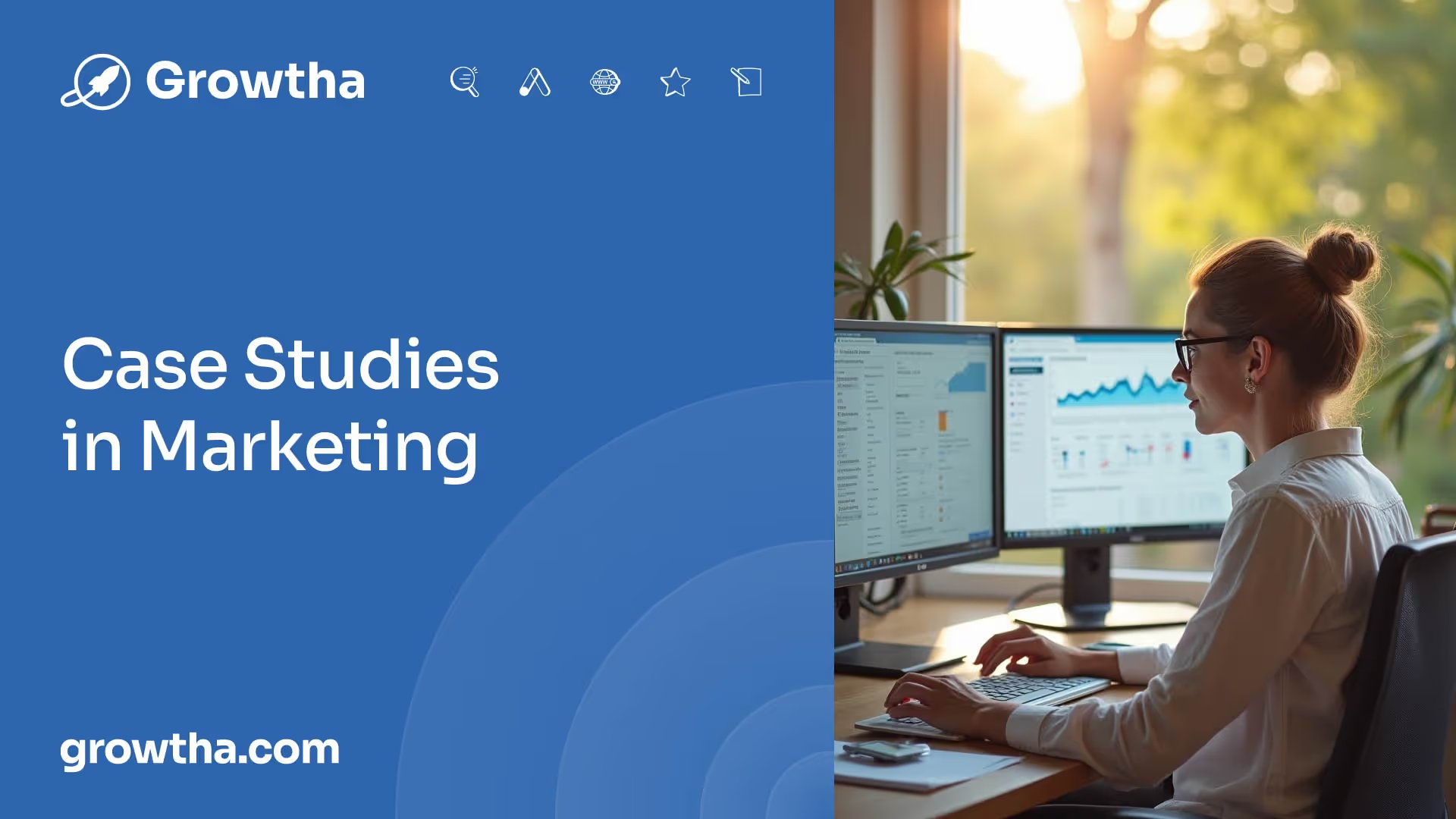Which Search Audience Solution Is Right for You?
Each approach has its own advantages and considerations, and selecting the right one depends on various factors such as the nature of the business, target audience and budget.


Which Search Audience Solution Is Right for You?
Understanding Marketing Approaches
When it comes to marketing, businesses have the option to choose between digital and traditional marketing approaches. Each approach has its own advantages and considerations, and selecting the right one depends on various factors such as the nature of the business, target audience, budget, and marketing objectives.
Digital vs. Traditional Marketing
Digital marketing refers to the promotion of products or services through digital channels such as websites, search engines, social media, email, and mobile apps. It offers powerful audience-targeting features, allowing businesses to reach their desired audience based on factors like age, location, interests, and more [1]. This targeted approach enhances the effectiveness of marketing efforts by ensuring that messages reach the people most likely to engage and convert.
In contrast, traditional marketing encompasses traditional forms of advertising such as television, radio, print media, billboards, and direct mail. Traditional methods have been widely used for decades and can still be effective in reaching certain audiences. However, one of the challenges with traditional marketing is the difficulty in tracking results. Unlike digital media, it can be challenging to determine which ads and messages are driving leads, sales, and revenue due to the non-digital nature of these channels [1].
Choosing the Right Approach
Choosing the right marketing approach depends on several factors. Digital marketing is known for its cost-effectiveness, as digital media advertisements are generally cheaper than traditional methods. Additionally, acquiring leads and customers through digital channels is often more cost-effective [1]. Furthermore, digital media provides detailed tracking capabilities, allowing businesses to measure the success of their campaigns and understand which strategies bring the most revenue [1].
On the other hand, traditional marketing can still be effective for certain businesses and target audiences. It can help create brand awareness and reach individuals who may not be as active in the digital realm. However, it's important to consider the limitations of traditional marketing, such as the lack of precise tracking and the potentially higher costs associated with certain traditional media channels.
Ultimately, the decision between digital and traditional marketing, or a combination of both, should be based on a thorough understanding of the target audience, budgetary constraints, and marketing objectives. By carefully evaluating these factors, businesses can determine the most suitable marketing approach to power up their marketing efforts and reach their goals.
Leveraging Amazon Insights

In the world of marketing, understanding your target audience is crucial for reaching and engaging potential customers effectively. Amazon offers a suite of insights and planning solutions that can benefit advertisers across various industries, helping them grow their businesses and connect with the right audience through differentiated and unique audience segments.
Benefits for Advertisers
Utilizing Amazon's audience insights can provide several benefits for advertisers. By leveraging easy-to-use tools and billions of proprietary audience signals, informed by online and offline touchpoints, brands can build insight-driven audience strategies. These strategies allow advertisers to discover new audiences and reach relevant, known audiences, ultimately driving better campaign performance and return on investment [2].
Here are some key benefits for advertisers when leveraging Amazon insights:
- Discover New Audiences: Amazon's audience insights allow advertisers to tap into a vast repository of data to identify and target new audience segments. By understanding customer interests and behaviors, advertisers can expand their reach and connect with potential customers who may have previously been untapped.
- Reach Relevant Audiences: With access to billions of signals, including Amazon shopping signals, advertisers can better understand their customers and target specific audiences aligned with their product's or brand's core customer profiles. This targeting enables advertisers to deliver more relevant and personalized messages to their intended audience, increasing the likelihood of engagement and conversion.
- Optimize Marketing Strategies: Amazon's insights help advertisers make sense of the vast amount of global signals available, enabling them to optimize their marketing strategies effectively. By analyzing customer engagement with ads and conversions, advertisers can refine their campaigns, allocate budgets more efficiently, and identify the most effective customer touchpoints.
Utilizing Audience Insights
Amazon's audience insights are easily accessible through their advertising console and Amazon DSP (Demand Side Platform). Advertisers can leverage a large catalog of audience segments that are ready to use and aligned with their product's or brand's core customer profiles. These segments can be selected based on specific targeting criteria, allowing advertisers to reach the most relevant audience for their marketing campaigns [2].
By utilizing Amazon's audience insights, advertisers can:
- Understand their customers' interests and behaviors: Amazon's insights provide valuable information about customer preferences, allowing advertisers to tailor their messaging and offerings accordingly.
- Discover and engage customers across the purchase journey: With access to a wealth of audience data, advertisers can identify the touchpoints where customers are most likely to engage and convert, both on and off Amazon.
- Analyze campaign performance: By analyzing how customers are engaging with ads and converting, advertisers can gain valuable insights into the effectiveness of their marketing efforts, enabling them to make data-driven decisions and optimize their campaigns.
Overall, leveraging Amazon's insights and audience planning solutions empowers advertisers to make informed decisions, target the right audience, and optimize their marketing strategies for better results. By tapping into the wealth of data and tools provided by Amazon, advertisers can enhance their understanding of their target audience and drive success in their marketing campaigns.
Case Studies in Marketing

When it comes to marketing strategies, case studies play a crucial role in analyzing past successes and failures, finding effective solutions, and convincing clients or stakeholders of the capabilities of a particular approach. They are an essential tool for showcasing real-world examples and providing evidence of the impact of marketing efforts. In this section, we will explore the importance of case studies in marketing and discuss how to craft effective presentations.
Importance of Case Studies
Case studies are valuable resources that demonstrate the practical application of marketing strategies. They provide insights into specific challenges faced by businesses and the solutions implemented to overcome them. By examining these real-world examples, marketers can gain a deeper understanding of the effectiveness of different approaches and adapt them to their own marketing campaigns.
Case studies also serve as persuasive tools when presenting marketing ideas to clients or stakeholders. They offer tangible evidence of the positive impact that specific strategies or tactics have had on businesses in similar industries. This helps build trust and confidence, as decision-makers can see how their investment in a particular marketing approach can yield favorable results.
Crafting Effective Presentations

To effectively present a case study, it is essential to organize the information in a concise and engaging manner. A well-structured case study presentation should include the following elements:
- Executive Summary: Summarize the key points and findings of the case study in a clear and concise manner. This provides an overview of the entire presentation and helps set the stage for the audience.
- Purpose of Analysis: Clearly state the purpose of the analysis and the specific problem or challenge that the case study addresses. This helps the audience understand the context and relevance of the study.
- Idea Description: Describe the proposed solution or marketing approach in detail. Explain how it was implemented and provide relevant data or examples to support the idea.
- Impact and Benefits: Convince the audience of the impact and benefits of the proposed solution. Highlight the positive outcomes achieved, such as increased sales, brand awareness, or customer engagement. Use quantifiable data and metrics to support the claims.
- Planning and Considerations: Discuss the planning process and considerations taken into account when implementing the solution. Address any risks or challenges encountered along the way and explain how they were overcome.
- Metrics and Evaluation: Explain the metrics used to evaluate the success of the marketing campaign. Present data and analytics that demonstrate the effectiveness of the strategy. Use visuals, such as graphs or tables, to make the information more compelling.
Crafting an effective case study presentation requires attention to detail and a focus on engaging content creation. Utilize visual design principles to create a visually appealing and impactful presentation. Highlight key points, use icons and data to back arguments, and ensure the strongest arguments are prominent. By following these guidelines, marketers can present case studies in a way that influences the audience and showcases the value of their marketing strategies.
New Media Methods
In the ever-evolving landscape of marketing, new media methods have emerged as powerful tools to enhance marketing strategies and reach target audiences effectively. In this section, we will explore two key aspects of new media methods: tracking campaign results and the benefits of audience interaction.
Tracking Campaign Results
One of the significant advantages of new media methods is the ability to track the results of marketing campaigns with ease. This allows businesses to gain valuable insights into the effectiveness of their strategies and optimize their marketing efforts accordingly. By utilizing digital media channels, businesses can access detailed information such as the number of clicks, views, purchases, or inquiries generated by their ads.
Tracking campaign results provides businesses with valuable data that can help them understand which strategies bring the most revenue. By analyzing this data, businesses can make informed decisions on how to allocate marketing resources and refine their messaging to maximize their return on investment.
Audience Interaction Benefits

Another advantage of new media methods is the seamless interaction and communication that they offer between businesses and their audiences. Digital media channels provide numerous opportunities for audience engagement and allow businesses to establish meaningful connections with their target customers.
Through features like clickable ads, social media comments, or email communication, businesses can easily interact with their audience and create personalized experiences. This enhances the overall customer experience and fosters a sense of trust and loyalty toward the brand [1].
Additionally, audience interaction through digital media channels enables businesses to gather important feedback, insights, and preferences directly from their customers. This information can be invaluable for shaping marketing strategies, improving products or services, and staying ahead of the competition.
With new media methods, businesses can leverage the benefits of audience interaction to build stronger relationships with their customers, enhance brand reputation, and drive long-term success.
By embracing new media methods and utilizing the opportunities they offer for tracking campaign results and audience interaction, businesses can elevate their marketing efforts to new heights. The ability to measure the impact of marketing campaigns and engage with audiences in a meaningful way sets new media methods apart from traditional marketing approaches. As the digital landscape continues to evolve, businesses must adapt to these advancements and harness the power of new media to stay competitive in the market.
Google AI in Search Ads
In the realm of search advertising, utilizing Google AI in search ads can significantly enhance marketing campaigns and drive better results. One powerful tool offered by Google is Responsive Search Ads, which harnesses the power of AI to deliver relevant and adaptive ads that connect with customers and drive conversions.
Responsive Search Ads Benefits
Responsive Search Ads (RSA) leverage Google AI to identify the best combination of ad assets to deliver relevant and helpful ads that adapt to shifting consumer behaviors. By utilizing RSA, advertisers can maximize relevance, improve ad performance, and connect with a larger audience.
The benefits of using Responsive Search Ads include:
- Increased Relevance: Google AI dynamically adjusts the ad's headline and description to better match the search query, increasing the relevance of the ad to potential customers.
- Expanded Reach: RSA allows for more variations in headlines and descriptions, increasing the chances of your ad appearing for a wide range of search queries.
- Optimized Performance: AI-driven optimization helps identify the most effective combinations of ad assets, improving click-through rates (CTRs) and conversions.
- Time Savings: Instead of creating multiple individual ads, advertisers can input multiple headlines and descriptions, and Google AI will automatically generate different combinations, saving time and effort.
Success Stories and Strategies

Numerous success stories demonstrate the effectiveness of Responsive Search Ads in driving impressive results. Here are a few examples:
- Canadian airline Swoop saw a 71% increase in revenue and a 61% increase in conversions by including its best performing keywords in its responsive search ads [4].
- Online travel agency MyFlightSearch focused on creating responsive search ads with 'Good' and 'Excellent' Ad Strength. This strategy resulted in a 14% increase in conversions and a 15% improvement in cost per booking [4].
- UK-based pet food company tails.com achieved a 182% increase in sign-ups and a 258% increase in clicks in Germany by combining broad match, Smart Bidding, and responsive search ads in their marketing strategy [4].
- Fashion brand HUGO BOSS achieved a 2.5x return on ad spend and a 5% improvement in click-through rate by incorporating image assets into responsive search ads, utilizing audience data, and implementing Target ROAS Smart Bidding [4].
These success stories highlight the potential of Responsive Search Ads when combined with audience data, Smart Bidding strategies, and other optimization techniques. By leveraging the power of Google AI, advertisers can drive better performance, increase conversions, and maximize their return on investment.
The implementation of Google AI in search ads, specifically through Responsive Search Ads, offers a valuable solution for marketers looking to optimize their search advertising campaigns. By taking advantage of the benefits and success strategies associated with this AI-powered tool, marketers can unlock new opportunities to reach and engage their target audiences effectively.
Overcoming Search Advertising Challenges
Search advertising can be a powerful tool for reaching potential customers actively searching for products or services. However, it also comes with its fair share of challenges. Two key challenges in search advertising are strategic keyword selection and measuring campaign impact. Let's explore these challenges in more detail.
Strategic Keyword Selection
One of the main challenges in search advertising is high competition and costs for certain keywords and industries. To overcome this challenge, strategic keyword selection is crucial. Here are some strategies to consider:
- Focus on long-tail keywords: Long-tail keywords are more specific and targeted, often with lower competition. They can help you reach a more relevant audience who are actively searching for specific products or services.
- Use negative keywords: Negative keywords allow you to exclude certain search terms that are not relevant to your business. By eliminating irrelevant searches, you can improve the quality and relevance of your ads.
- Monitor quality score: Quality score is an important metric that can impact ad rankings and costs. By optimizing your ads, landing pages, and keyword relevance, you can improve your quality score and potentially reduce costs.
- Optimize landing pages: Ensure that your landing pages align with the keywords and ad copy. A well-optimized landing page can improve the user experience and increase the chances of conversions.
By implementing these strategies, you can enhance your keyword selection process and make your search advertising campaigns more effective.
Measuring Campaign Impact
Measuring and proving the results and impact of search advertising campaigns can be complex due to various metrics, channels, and attribution models. To overcome this challenge, consider the following approaches:
- Define clear goals and KPIs: Clearly define your campaign goals and key performance indicators (KPIs) upfront. This will help you measure the success of your campaigns and align them with your business objectives.
- Use the right tools for data collection and analysis: Utilize analytics tools to collect and analyze data from your search advertising campaigns. These tools can provide insights into metrics such as impressions, clicks, conversions, and return on investment (ROI).
- Employ a consistent attribution approach: Attribution models determine how credit is assigned to different touchpoints in the customer journey. Choose an attribution model that aligns with your business goals and consistently apply it to measure the impact of your campaigns.
By following these practices, you can gain a better understanding of the impact of your search advertising efforts and make data-driven decisions for optimization.
Overcoming the challenges in search advertising requires a strategic approach, continuous learning, and staying informed about the latest best practices and trends. By adapting to changing customer behavior, keeping up with algorithm updates, and utilizing the right keywords and measurement techniques, you can maximize the effectiveness of your search advertising campaigns.
References
[1]: https://www.webfx.com/digital-marketing/learn/traditional-media-vs-new-media/
[2]: https://advertising.amazon.com/insights-and-planning
[3]: https://slideuplift.com/blog/10-successful-case-study-templates-design-tips-free-template
[4]: https://support.google.com/google-ads/answer/6167122?hl=en







